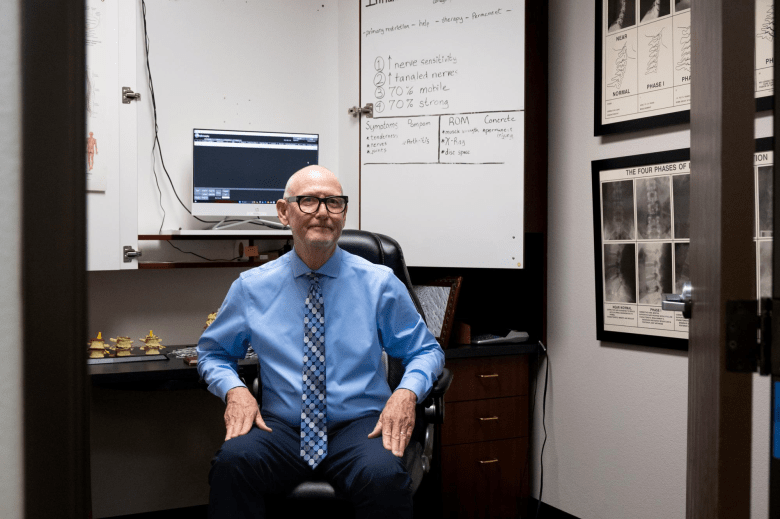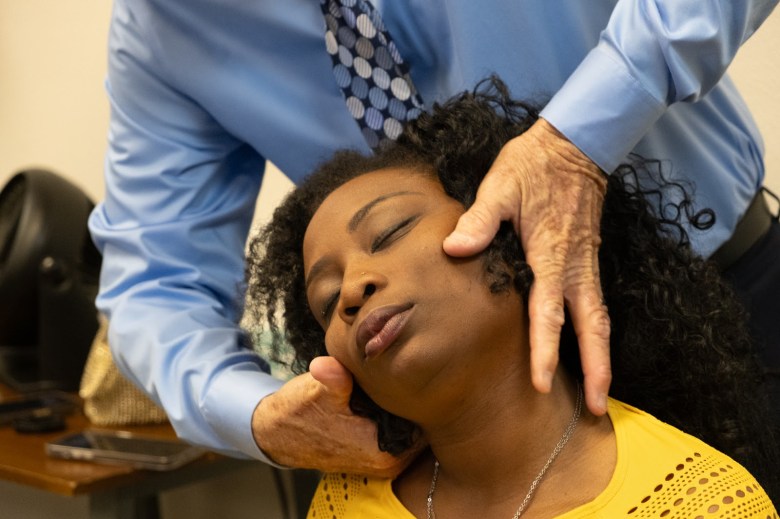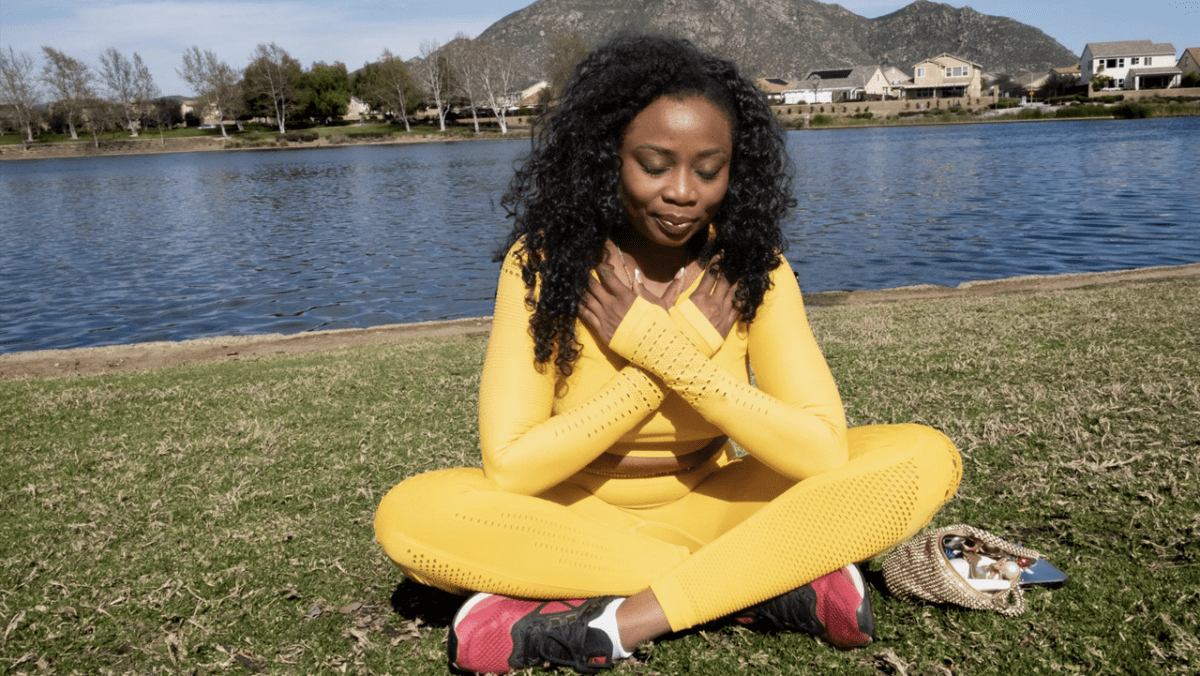Last Updated on April 2, 2024 by BVN
Breanna Reeves | Photos by Aryana Noroozi
In December 2021, Briana Rice, 38, was on her way home from work when she was rear-ended by a semi-truck. She suffered a traumatic brain injury (TBI), a spinal injury and post-traumatic stress disorder (PTSD).
Prior to her accident, Briana was a scientist, working in the field of international healthcare regulations for 14 years. She worked between eight to 10 hours a day, traveled monthly and regularly attended events on the weekends — always on the move. Around the time of the accident, Briana had been working on participating in her fourth Los Angeles Marathon and had traveled to 35 countries.
“I’m going to be perfectly honest, when it initially happened, I thought my world was over,” Briana said. “Everything I loved was gone.”
TBI is an injury that affects how the brain works and can be caused by a blow to the head or a penetrating injury such as a gunshot, according to the U.S. Centers for Disease Control and Prevention (CDC). There are three main types of TBI: mild, moderate and severe, all of which are serious injuries that can impact a person’s brain and the way they function.
It took Briana about eighteen months to regain her ability to read and write, walk without difficulty and navigate memory loss with the support of physical therapy, chiropractic care, acupuncture and behavioral therapy.
“I thank God that I don’t look like what I’ve been through, but I do lead a life of accommodations,” Briana explained. “As a brain injury survivor, there are still just certain things that [make me] know I’m not the same person. I have to lead a much slower life. I always have to have accommodations.”
With all that she has accomplished over the last few years since her accident, Briana is often confronted with people who judge her appearance or who question her behavior, not recognizing her as someone with a disability.
Living with an invisible disability
“I’m not going to sit here and say that it’s easy. I’m not going to sit here and pretend that it’s something that I love,” Briana said. “There are times that I just straight up struggle, and I want to bring more awareness to that because it is an invisible disability.”
The Invisible Disability Association describes an invisible disability as a physical, mental or neurological condition that is not visible from someone’s outward appearance, but still impacts and limits a person’s movement, senses and activities.
Roughly 96% of people with disabilities have hidden disabilities, according to Rhonda Fumia, director of Independent Living Services for the Center for Disability Rights.
“Just because a disabled person is not using a wheelchair or [doesn’t] have other visible adaptive devices doesn’t mean that they do not have a real disability,” Fumia said in an email.
Invisible disabilities are also called non-apparent or hidden disabilities and include chronic fatigue, autoimmune disorders and cognitive disorders such as attention-deficit/hyperactivity disorder (ADHD) and dyslexia.
In the last few years since recovering from the accident and navigating life with an invisible disability, Briana has found purpose in her experience: the Love and Light Movement. Initially started as a movement about travel and healing, the Love and Light Movement became a “living testament of my own journey to spiritual awakening,” which wasn’t on her bucket list, according to Briana.


While Briana’s journey has not been without difficulty, she shared that she understands God’s grace and compassion in a way she never did before.
Last year, Briana was asked to participate in a pageant hosted by Women of Achievement, an organization dedicated to recognizing and developing women leaders in their communities. As Briana got back into the swing of her life and began prepping for the pageant, she suffered a fainting spell as a result of swelling in her spine.
Thankfully, her doctors at Sheridan Chiropractic in Riverside County caught what was happening in her spine. When Briana was initially diagnosed, her initial prognosis was bleak and she needed surgery.
“I did some research in a very different way than I used to as a scientist,” Briana said.
Her research led her to seek out less Westernized care and search for more holistic options. Briana turned to chiropractic and acupuncture care to support her in regaining her mobility. With the help of her chiropractor and acupuncturist, she was able to go from about 30% mobility to 100% mobility.
Dr. Shamus Sheridan, Briana’s chiropractor, is an expert in whiplash nervous system injuries. TBI involves the nervous system and the brain’s connection to the spinal cord, where the nerves exit out and send messages from the brain, down to the spinal cord and out to the body.
When there is an injury to the spine, it can compress the spinal cord or nervous system, and block those messages, Dr. Sheridan explained.
“We did an evaluation with Briana. We found that she had a lot of pressure at the base of her brain and the spinal cord there that comes out and goes into the upper cervical vertebrae,” Dr. Sheridan said. “We just removed that interference to get that flow going.”
There were times Briana left the chiropractor’s care in tears because she was in pain from the process, but over time the pain lessened and the exercises got easier. Briana still receives chiropractic and acupuncture care twice a week.
The road to healing
Briana’s journey to healing included trusting the expertise of her doctors, trusting God and trying new and old activities that would heal her body in other ways. Briana practiced and continues to practice sound healing as a way to find internal peace. She tried an alternative psychedelic treatment and attended behavioral therapy to address her emotions and the toll it took on her body.
“I understand how to meditate to really find peace, and so many other just nice little gems in my life that I’ve never thought I would be open to spiritually have found me through this accident, and I love that,” Briana said.
Although she suffered a setback with her spinal compression, Briana recovered with the support of her doctors and was crowned Ms. California – African American and Ms. Woman of Achievement International earlier this year.

Briana has spent the last several years sharing her story while also accomplishing new things she never considered. In 2021, Briana started the Blackberry Merlot Wine Festival in Temecula along with her business partner, Rickey D’Shon, a music producer who hosts events in Los Angeles. While Briana was recovering, D’Shon took a year off from their business, in support of Briana’s recovery.
“[I was] grateful for that because in business sometimes that’s unheard. People are just so driven to make money, I realized how much love I have around me,” Briana said through tears. She shared that her family supported her and stepped up to care for her, almost like a child.
“My girlfriends — I call them my goddesses — almost literally held my hand, when I would try to get back in the world by wanting to travel…,” Briana shared. “I looked fine, but they would hold my hand in a dignified way or help me sit down so I can listen to music and still kind of experience [things], even though the world around me just seemed too overwhelming at times.”
According to Briana, one thing about a brain injury is that the world becomes overstimulating. But she has found a way to speak up for herself, to advocate for herself when she needs support or accommodations, which can be difficult to do.
Many misconceptions exist about visible and invisible disabilities, according to Fumia.
“For instance, some believe people with disabilities don’t need accommodation, whereas the reality of accommodations is that everyone needs it regardless of visibility,” Fumia stated. “Another misconception is that a disability must be visible to be considered legitimate.”
The Americans with Disability Act (ADA) does not require a disability to be visible for protection against discrimination. The ADA recognizes several visible and invisible disabilities such as TBI, PTSD, epilepsy and diabetes, among others.
“Today, I’m fine. Most days, I’m fine. But if I need help or if I get emotional, if you could just be gentle with me, that would be great,” Briana said as she explained how she approaches people in her life about needing grace.
Briana’s days are more gentle and much slower than they were before the car accident. Now, her days are filled with more sleep, practicing the Pomodoro technique suggested by her neuropsychologist and giving gratitude.
“I’ve run marathons, which seems like the longest, hardest thing to do,” Briana said. “This has been the ultimate marathon, finding grace and maintaining gratitude, and still being able to encourage others when there are days where I don’t feel good.”
As March marks Brain Injury Awareness Month, observed by the Brain Injury Association of America (BIAA), Briana hopes that people can be more mindful of those struggling with traumatic brain injuries or other invisible disabilities who need compassion. There are several resources available for those who need them through the ADA, Center for Disability Rights and Office for Civil Rights. Individuals can also take advantage of different features on iPhones and Apple watches, and several support groups online.
“I really want people to be encouraged that there is a lot of help out there. You can still lead a beautiful life,” Briana said.
October is designated as Invisible Disabilities Awareness Month and Fumia believes this can be an opportunity to learn more about hidden/invisible disabilities, and raise awareness in order to foster empathy and inclusivity.




